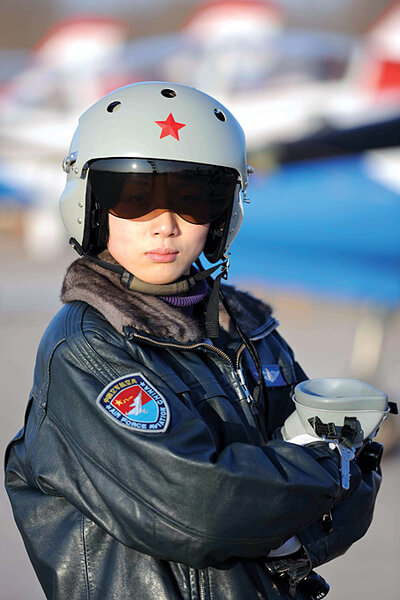In bid for space station status, China to build 'Heavenly Palace'
Loading...
The crew of the International Space Station (ISS) may want to draw up a large “Welcome to the Neighborhood” sign. China has announced plans to launch a modest space station of its own next year.
Initially, the 8.5-metric-ton module will be unmanned, providing a target that China’s budding human-spaceflight program can use to practice on-orbit dockings. If all goes well, however, taikonauts (Chinese astronauts) will move in.
After launching its first taikonaut into space in October 2003, China is now moving methodically and deliberately to catch up with other major space-faring nations.
China’s module, floridly named Tiangong 1 (Heavenly Palace), represents the first step in the country’s three-stage plan to assemble an orbiting lab. This first step is more akin to NASA’s Skylab, a converted second stage from Apollo-era Saturn V rockets that was launched in 1973. It hosted three crews between 1973 and 1974.
As currently envisioned, China’s final facility would be a collection of modules comparable to Russia’s Mir space station. Moscow took the 10-year-old Mir out of orbit in 1996 after becoming a partner in the NASA-led ISS project.
Beijing’s motives
To some extent, China may be driven by station envy, suggests Dean Cheng, a specialist on Chinese space and security issues at the Heritage Foundation in Washington.
At the time, Russia had Mir in orbit. The United States and its Western partners had embarked on a space-station program and were only a year away from bringing Russia into the partnership. China wasn’t invited.
“If you don’t have a car, you might want one, even though your neighbor has a very nicely tricked-out Cadillac or BMW,” Mr. Cheng says.
That desire has been fueled by the role human spaceflight has played in helping to establish a country’s international standing, he adds.
“When you look at what China has said about space, one of the issues that’s very important is the role of advanced science and technology in building what the Chinese call comprehensive national power,” Cheng explains. “Are you derivative, or are you self-sufficient” in science and technology?
“Space, rightly or wrongly, is one of the crown jewels” in China’s effort to strive for scientific and technological self-sufficiency, he says.
Others, such as Gregory Kulacki, a senior analyst with the Union of Concerned Scientists who focuses on China and national security issues, note that in discussions with Chinese scientists and engineers, they cast the country’s space program in terms of ensuring “a place for one’s mat” – the Chinese version of a seat at the table – on the global space- exploration stage.
Why not join us at the ISS?
One potential place for China’s mat is to join the ISS. Under President Obama’s proposed overhaul of NASA’s human spaceflight program, the US would remain active on the station through at least 2020.
But many in and out of Congress worry that closer cooperation could lead to US space technologies finding their way to China’s military or to rogue states via China. China’s human-rights record also comes up, as well as concerns over the US losing its superiority in what many military strategists see as the ultimate high ground.
And while decisions about the future of the program are made politically, the program’s day-to-day operation is in the hands of China’s military, a rather opaque institution, several China specialists note.
Yet more US-Chinese space cooperation, at least for now, could be a nonstarter within China, too.
People in China’s space community are uneasy with more US cooperation, despite the first overtures from Washington in “a very long time,” says Joan Johnson-Freese, a specialist on China’s space program at the US Naval War College in Newport, R.I.
China has carefully set out a path for human spaceflight, and despite some delays in the timetable, it’s sticking to that program, she says.
Working at their own pace
“They are more comfortable with a tortoiselike, incremental-move-forward approach as opposed to Mr. Toad’s Wild Ride,” Ms. Johnson-Freese says.
Dr. Kulacki agrees. In discussions he says he’s had with Chinese involved in the space program, the Chinese take offense at the US holding out cooperation as some kind of carrot in exchange for policy changes more to Washington’s liking.
“They say they don’t need our money or our technology,” Kulacki says. “If they do cooperate with the US, it will only be because the political authorities in China force them to.”
China’s initial module would host three crew members once the country has demonstrated an ability to dock on orbit. Taingong 1 would be replaced between 2012 and 2017 with a more capable module and a cargo carrier. By 2020, the country plans to loft a station with a 20-metric-ton core, a pair of labs, and an ability to dock four craft at the station simultaneously. It would give China almost as much working space as the ISS.
China appears aimed at laying the foundation for living and working in space for long periods of time, as is the case with the ISS. Experiments are expected to focus on human, plant, and animal adaptation to microgravity and materials research.
What happens after 2020 is unclear, Kulacki says. He suspects landing humans on the moon is being hotly debated at the moment, assuming a decision is still pending.





